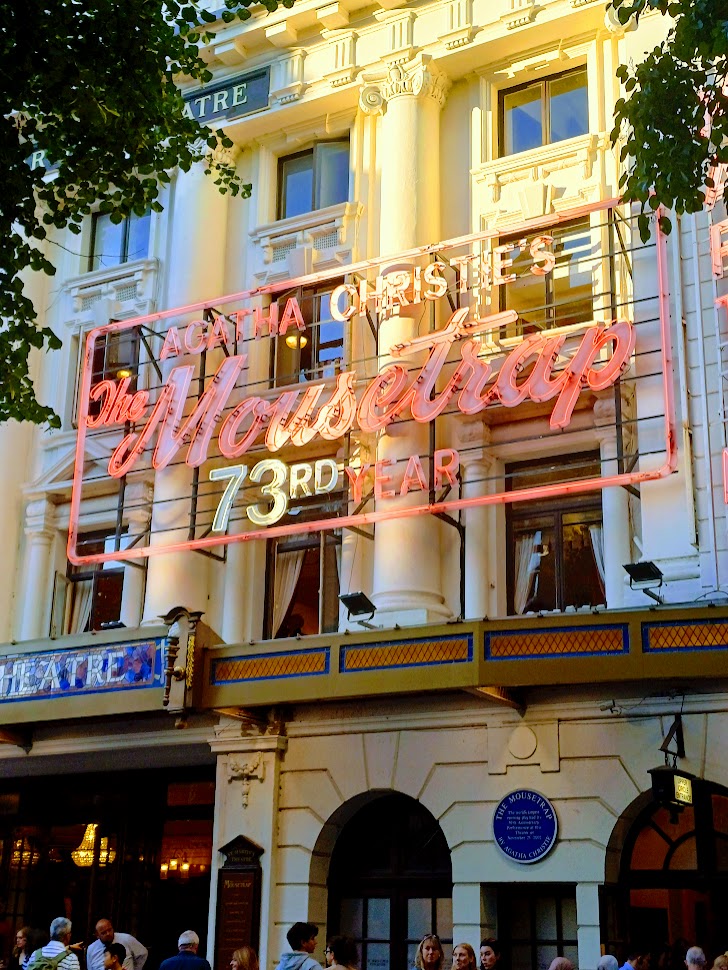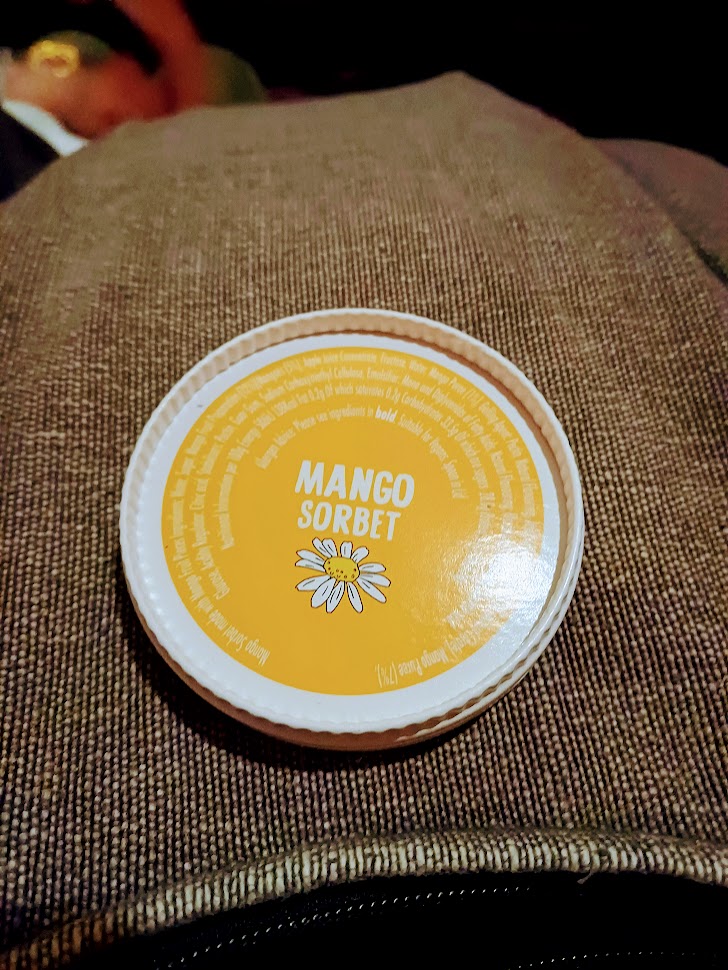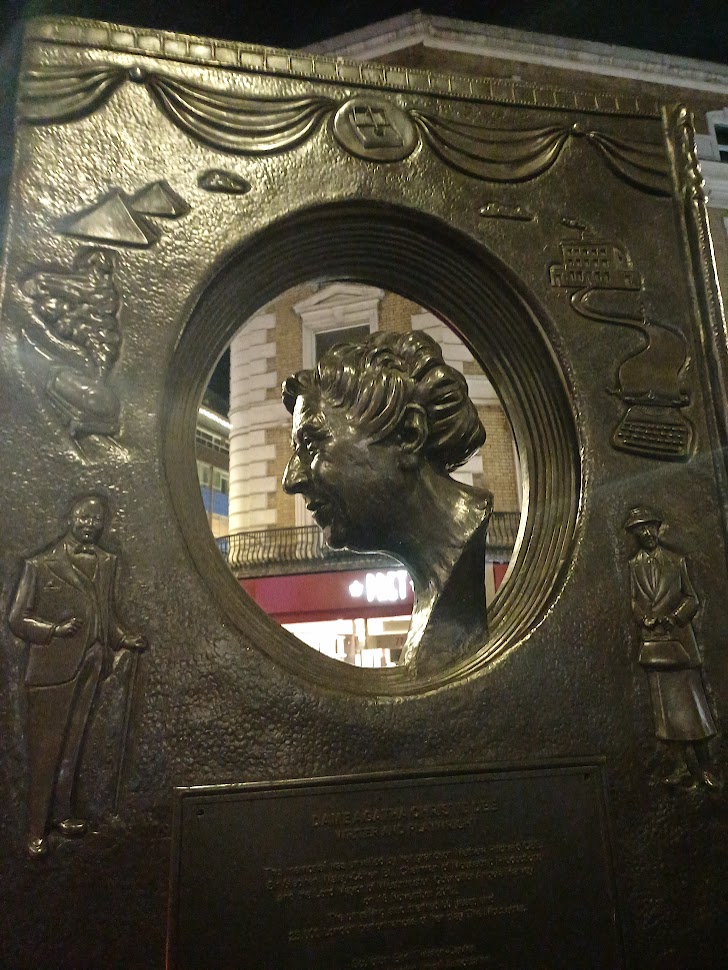Now, I’m not sure what you’re expecting from a review of a 73-year-old play but I’ll tell you what you’re not going to get – spoilers. There’s a tradition of keeping the Whodunnit in this Whodunnit under wraps and I swear by all that is Christie that I will not be the blogger to break that tradition.
So what is there to say? Well, I can tell you all about the gorgeous little St Martin’s Theatre, which looks like it has barely changed since the 1950s:
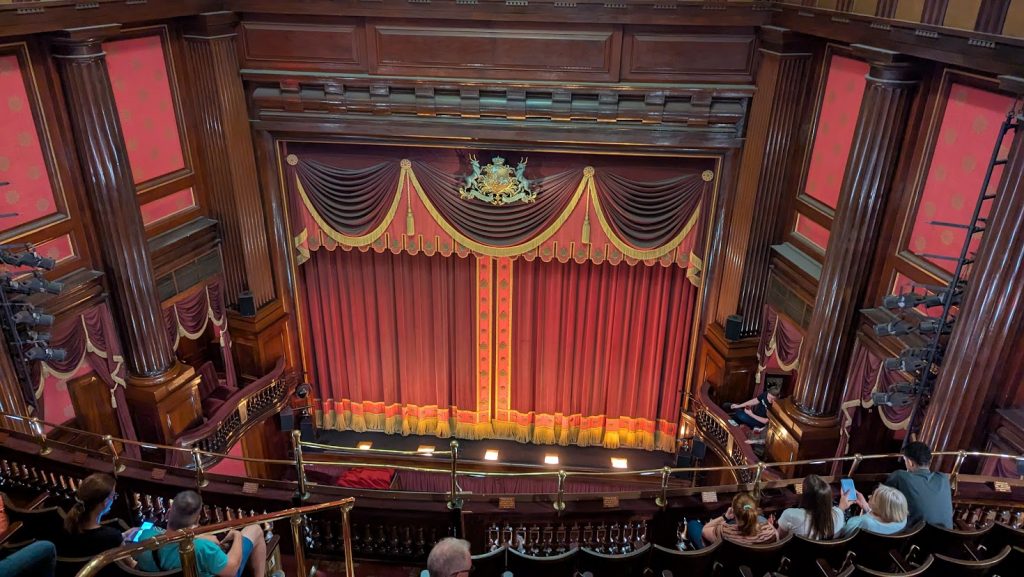
And I can tell you about the slightly uncomfortable seats – not Gatsby by any stretch but not the most comfortable we’ve sat in either. Still, we got the cheapest tickets available and had a very decent view of the stage so can’t complain. I can tell you about the toilets, which were as bijou as its neighbour, the Ambassadors. And I can tell you a little about the production itself, which must have a reason for being the West End’s longest running play.
It’s a classic country house murder mystery set up. If it was a TV show, it’d be called a bottle episode – one set, eight actors, no multi-roleing (although there are some hats). The play starts with a scream, which I think chronologically fits at the end of the first act, and the radio announcer right at the start sets out the background to the mystery, which concerns a sudden death in Paddington. Incidentally, the radio announcer has been the same voice throughout the show’s run – Deryck Guyler recorded the announcement in 1952 and it has been used for every performance since.
The current cast are Georgina Duncan and Sam Hollis as Mr and Mrs Ralston, Adam Woolley as Christopher Wren, Lucy Tregear as Mrs Boyle, Neil Reidman as Major Metcalf, Chloe Fenwick-Brown as Miss Casewell, John Wark as Mr Paravicini and Jack Condon as Sgt Trotter. They all play the roles fairly straight, as they were first written and there’s no attempt to update the 1950s sensibilities for a modern audience. There are no cheeky winks, no anachronistic pop culture references and no shoehorned social commentary beyond what was in the original script. And I admire that – it must be tempting to try and tinker with things and give them more of a 2025 feel but what we’re looking at is essentially a time capsule and even if the actors were born after the play was written, they still handle the material as their predecessors would have. It’s an incredible thing to be part of – knowing that we’re in the same seats as the1950s audience and watching the same show.
When I say it’s lacking in cheeky winks, that’s not to say it’s lacking in humour. There was plenty to entertain even the Gen Alpha teen as I heard her guffawing a few times, especially at the antics of the childlike Christopher Wren. There are jokes written in but nothing that takes you out of universe. We are all in a snowy guesthouse in rural Berkshire and there is no demand of the audience other than to watch the mystery unfold. Even the reference to the Berkshire Police is accurate to the time – it would be Thames Valley Police nowadays but I have googled and apparently they have only been reducing crime, disorder and fear since 1968.
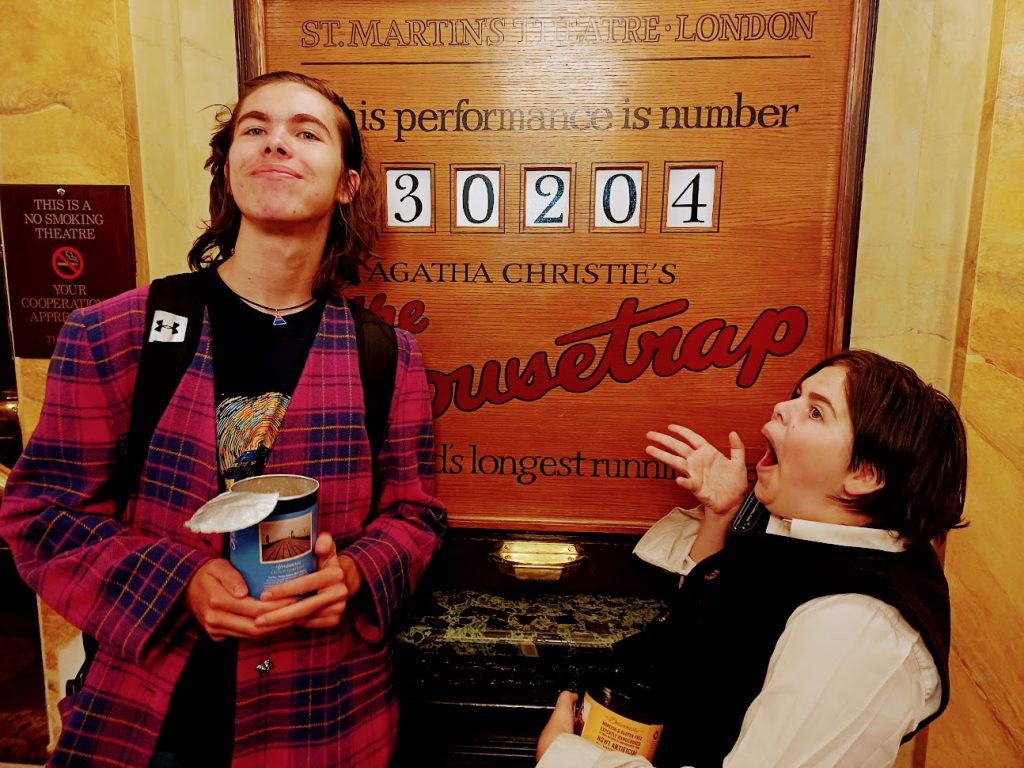
There are a few character choices that a modern audience might interpret differently to how they were originally written – the mannish Miss Casewell is clearly lesbian-coded in the eyes of the teens and the aforementioned Christopher is clearly neuro-diverse. But that’s just how these kids see the world – “Gatsby” and “Mincemeat” got similarly analysed afterwards.
The mystery stands up well too. There are enough clues dropped throughout that you can have a good chance of solving it (and we got pretty close with our interval theories) but it isn’t super-obvious. There are some large red herrings, as there should be, and it’s worth paying attention to the small details. Also, as is my experience with living in Berkshire, people will go to London any time they can just to avoid being in Berkshire for a day. Don’t blame me – Agatha Christie said it. Kinda.
Oh, and in case you were wondering….mango sorbet for me this time. Strawberries and Cream for Nathan and VK and crisps for Roo. This stuff is pretty much our staple diet this year.
So a more traditional show than some we’ve seen lately but a lot of fun nonetheless. It’s been on our to-see list for over 20 years now so a relief to finally tick it off…and seats were pretty cheap with London Theatre Week too. If you’re curious about what makes a play stand the test of time, it’s well worth a visit. Just don’t spill any spoilers…

